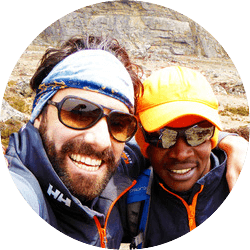I started this website in 2013 after climbing Kilimanjaro for the first time. Since then, over 5 million people have visited the site, and my guidebook, Mount Kilimanjaro: Trekkers Guide to the Summit, has been downloaded over 10,000 times.
On this page, I cover everything you need to know about Mount Kilimanjaro and how to prepare for your summit attempt.
So stick around, pop the kettle on, and let’s get started!
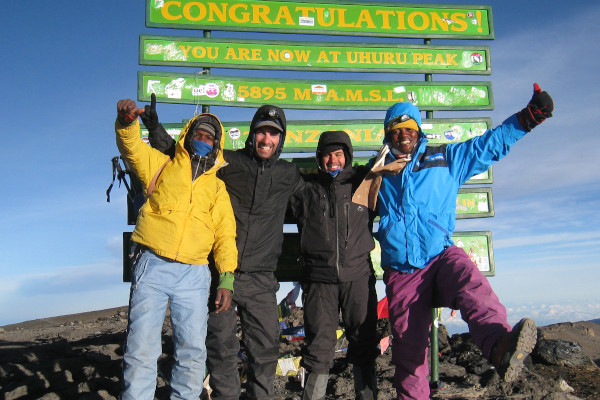
Plan your Kilimanjaro trek
This is the local guiding company I've vetted and recommend.
Discover Kilimanjaro
Routes: All routes
Important: Training, Costs, Visas and vaccinations, COVID-19
More useful articles: Porter tips, Toilets on the mountain, Getting to Kilimanjaro, Full moon dates, Climbing with asthma, Charity climb, Kilimanjaro animals
Add-on: Tanzania Safaris, Zanzibar, Tanzania hotels
Kilimanjaro FAQs
How difficult is Kilimanjaro?
Hiking Kilimanjaro has its difficulties. Although it doesn’t require any technical climbing or mountaineering skills, due to the high altitude, it is a tough challenge.
Anyone with the right level of fitness and mental determination can climb Kilimanjaro though. For inspiring stories and preparation information see my article can a beginner climb Kilimanjaro?
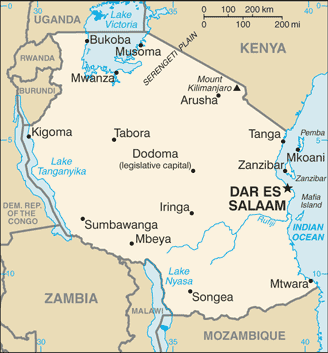
Mt Kilimanjaro Overview: Why is Kilimanjaro famous?
Mount Kilimanjaro is situated in the Northern part of Tanzania, in the Kilimanjaro National Park. It covers an area of 100 kilometres long and 65 kilometres wide.
The mountain is a dormant volcano that is comprised of three volcanic cones, Shira, Kibo (on which Uhuru summit stands) and Mawenzi.
Kibo is classified as dormant but not extinct. The last major eruption from Kibo occurred 350,000 years ago. The last volcanic activity happened 200 years ago and resulted in today’s ash pit (visible from Uhuru Peak).
Read more about Kilimanjaro's formation and eruption history.

Mount Kilimanjaro is the highest mountain in Africa and the tallest free-standing mountain in the world. By free-standing, or non-massif, I mean it is not part of a mountain range.
The height of Mount Kilimanjaro is 5,895m or 19,341 feet, and its main summit is called Uhuru Peak. To put Mt Kilimanjaro’s height into perspective, Mount Everest stands at 8,848 meters (29,029 feet) – just over 2,950 meters higher.
But here’s an interesting Kilimanjaro Fact: Both Everest Base Camp’s (EBC) – South and North – are below the summit of Kilimanjaro; however, most hikers take upwards of 8-10 days to reach EBC.
On Kilimanjaro, trekkers on fast routes reach the summit within 4-5 days. The rapid ascent of Mount Kilimanjaro makes it a difficult and rather dangerous mountain to hike due to the risks of altitude sickness.
As the highest mountain in Africa, Mount Kilimanjaro is one of the Seven Summits (i.e. highest mountains on each of the seven continents).
The other mountains on the Seven Summit circuit, in order of height, are:
- Mount Everest – Asia – First ascent 1953 – 8,848 meters
- Aconcagua – South America – First ascent 1897 – 6,961 meters
- Denali – North America – First ascent 1913 – 6,194 meters
- Mount Kilimanjaro – Africa – First ascent 1889 – 5,895 meters
- Mount Elbrus – Europe – First ascent 1874 – 5,642 meters
- Mount Vinson – Antarctica – First ascent 1966 – 4,892 meters
- Mount Kosciuszko – Australia – First ascent 1840 – 2,228 meters
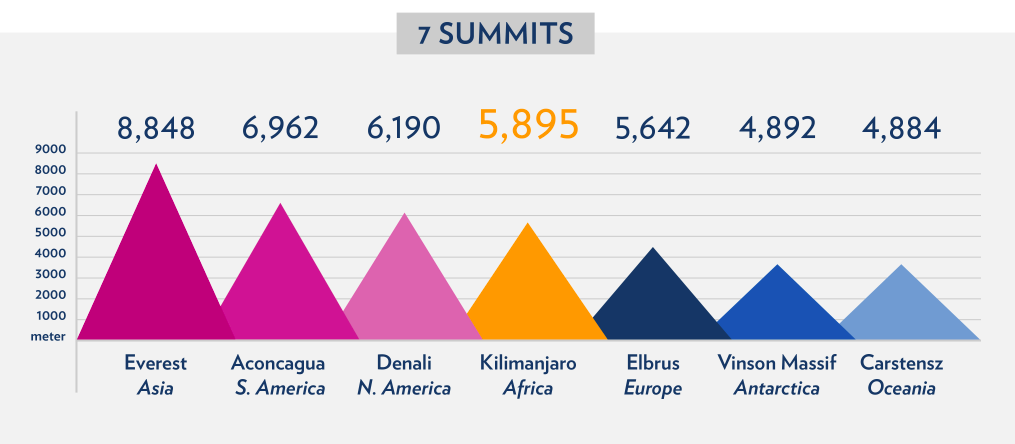
What are the Kilimanjaro Hike Routes?
There are 7 official routes on Kilimanjaro. Check out my Kilimanjaro route overview article where I provide a summary of the pros and cons of each trail to the peak.
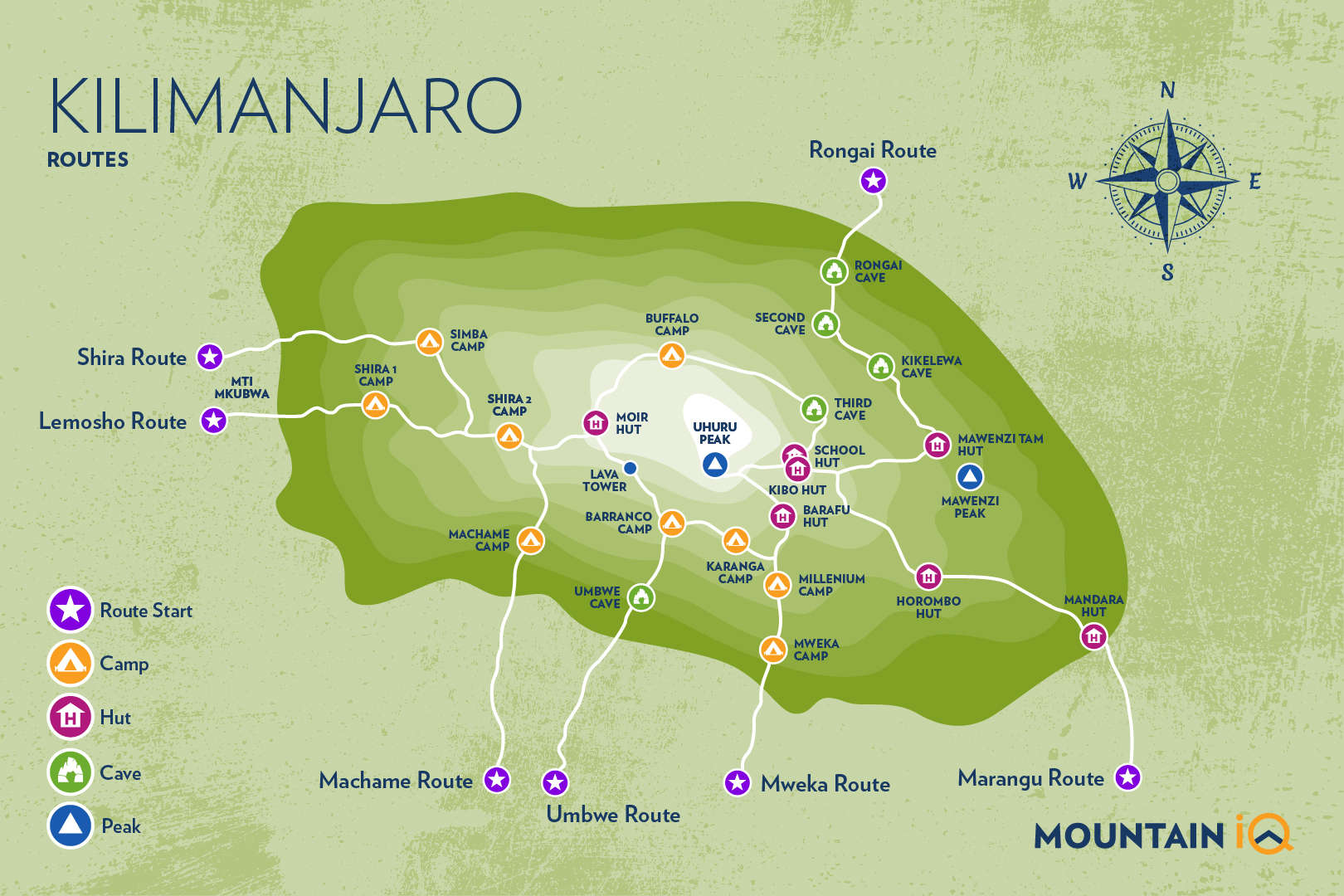
Popular Southern Circuit Routes
Lemosho Route
The Lemosho starts on the far Western side of Mount Kilimanjaro. It is best trekked on a 7 or 8-day itinerary and offers great acclimatisation. High summit success rates and awesome scenery make the Lemosho one of my favourite routes on Kilimanjaro. Discover the Lemosho Route.
Machame Route
The Machame starts from the South-west at a slightly lower altitude than the Lemosho. It is typically completed on a 6 or 7-day itinerary, with the latter offering better acclimatisation and higher summit success rates. Like the Lemosho it is scenic and a great route to choose. Discover the Machame Route.
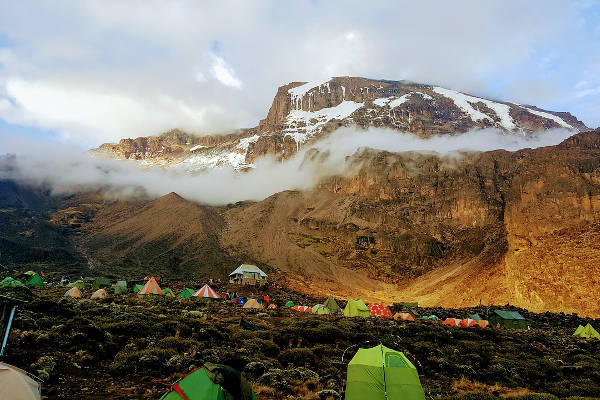
Other Unique Kilimanjaro Route Options
Marangu Route
The Marangu is the only route with hut accommodation. It tends to be the most popular route as it is shorter and cheaper than others. Success rates are relatively low though. If you are considering the Marangu, make sure you choose the 6-day itinerary (not the 5-day). Learn more about the Marangu Route.
Northern Circuit
The Northern Circuit is the longest and quietest route on Kilimanjaro. The route starts on the Lemosho, but then traverses the Northside of the mountain and approaches the Uhuru Peak via Gilman’s Point. It’s a great trail if you have the time and money, and want to avoid the busier trails. Learn more about the Northern Circuit.

Plan your Kilimanjaro trek
Get connected with my recommended local Kilimanjaro operator
Rongai Route
The Rongai is the only route that starts in the north, from the Kenyan border. The trail offers some of the best low lying images of Mount Kilimanjaro. It is also a great option if you are restricted to climbing during the rainy season, as the north tends to be in a rain shadow. Learn more about the Rongai Route.

Kilimanjaro Routes (Not Recommended)
Shira Route
The Shira is the old starting point from the Western side of Kilimanjaro. Since the Lemosho gate opened, the Shira has become much less popular as its start point is relatively high, and therefore not good for acclimatisation. Learn more about the Shira Route.
Western Breach
The Western Breach is a somewhat technical approach to Kilimanjaro. The route bypasses the Southern Circuit and heads north past Lava Tower. The trail is rocky and unstable. Rockfalls are common and I do not recommend this route unless you have technical climbing skills. Learn more about the Western Breach.
Umbwe Route
The Umbwe starts in the south and follows a relatively direct path up to Lava Tower, where it joins the Southern Circuit routes to Barranco. Due to its fast and direct approach, acclimatisation opportunities are poor and I don’t recommend it. Learn more about the Umbwe Route.
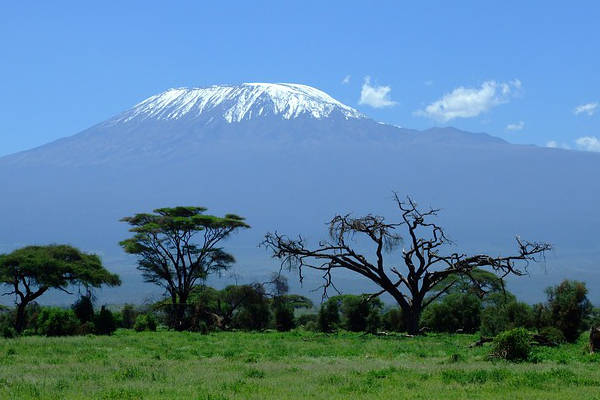
When is the best time to climb Kilimanjaro?
The best time to hike Kilimanjaro is January–March and June–October. The former season is generally colder than the latter but is also often quieter.
Here is a brief overview of the main seasons or read my article on the best time to climb Kilimanjaro.
January-March
January through March is a good time to climb Kilimanjaro. The weather is pretty stable and there isn’t much rain. It is however colder during this period. Snowfall at or near the summit is quite likely.
April-May
April and May are the rainy season months. It is not a great time to hike Kilimanjaro. Heavy rainfall on the lower reaches of the mountain is common. Cloud cover and poor visibility are also significant during this period.
June-October
June through October is the busiest season on the mountain as it coincides with the summer holiday period in Europe and North America. The weather is also very good. Generally dry and warm during the day.
November-December
November is a light rainy season. The Rongai makes for a good choice during this month as the North tends to stay dry. December is fast becoming a popular season, despite being very cold on the summit.
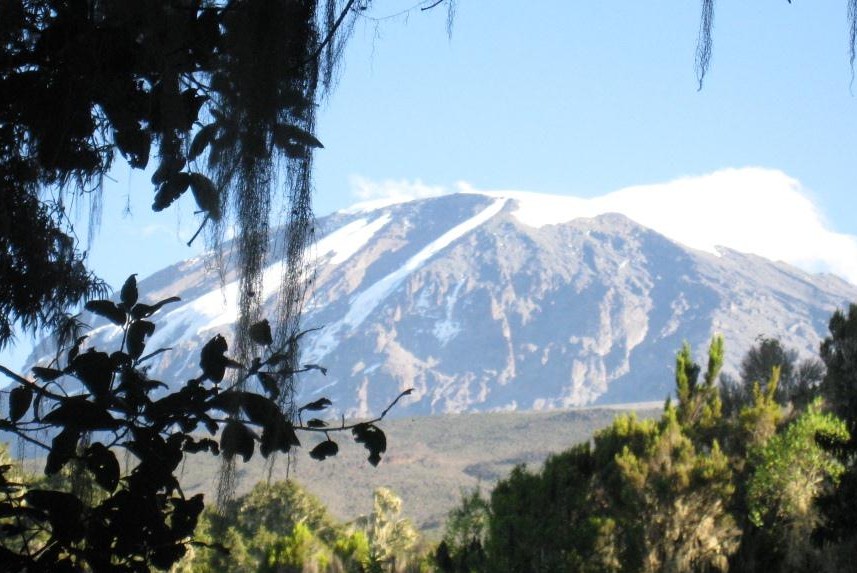
Can you give me more detail on Kilimanjaro weather?
I have a detailed article on Kilimanjaro’s weather, but as a quick snapshot, here is some detail.
Kilimanjaro’s weather is heavily influenced by the interaction of trade winds.
The Southeast trade winds travelling over the Indian Ocean carry loads of moisture. When they hit Kilimanjaro, around March, they are forced upwards where they condense, form clouds and precipitation. This means March through to May is the wettest season on Kilimanjaro.
Anti-trade winds from the northeast carry very little moisture but blow strongly. The strength of these winds which last from April through to October keeps the Southeast trade winds below them, hence these months are usually dry and cloud cover and precipitation is generally restricted to the lower slopes.
The Northeast monsoon arrives in November and brings some light rains to the northern slopes of Kilimanjaro.
March, April and November are the wettest months on Mt Kilimanjaro. January-March and June-October are the best months for trekking. Snowfall and cold temperatures are common during December-May.
The chart below shows the average snowfall in cm on the summit of Kilimanjaro. As you can see it is highest during November-May.
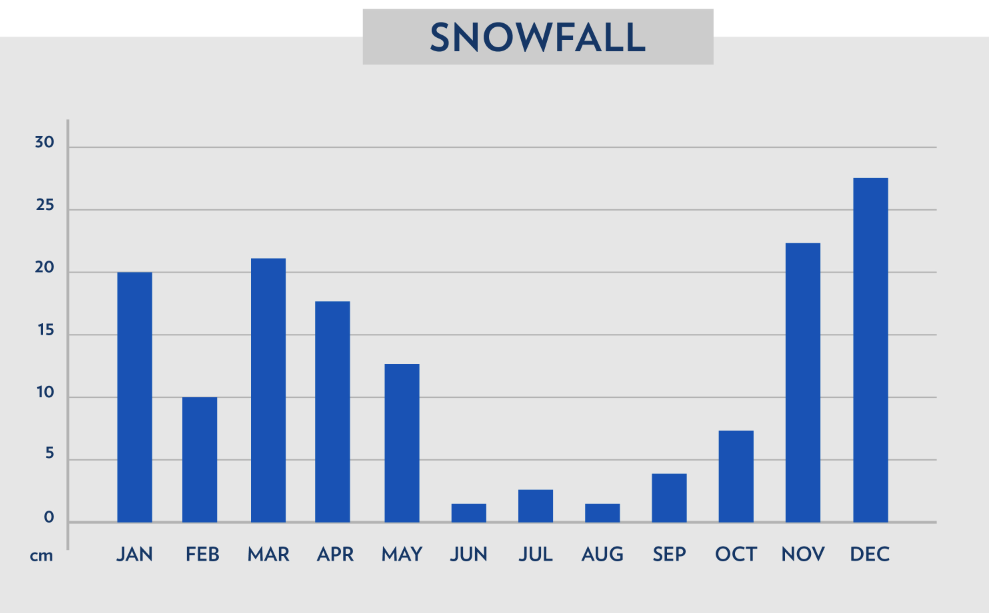
In terms of temperature, here are daily averages in degrees Celsius by month at different altitudes.
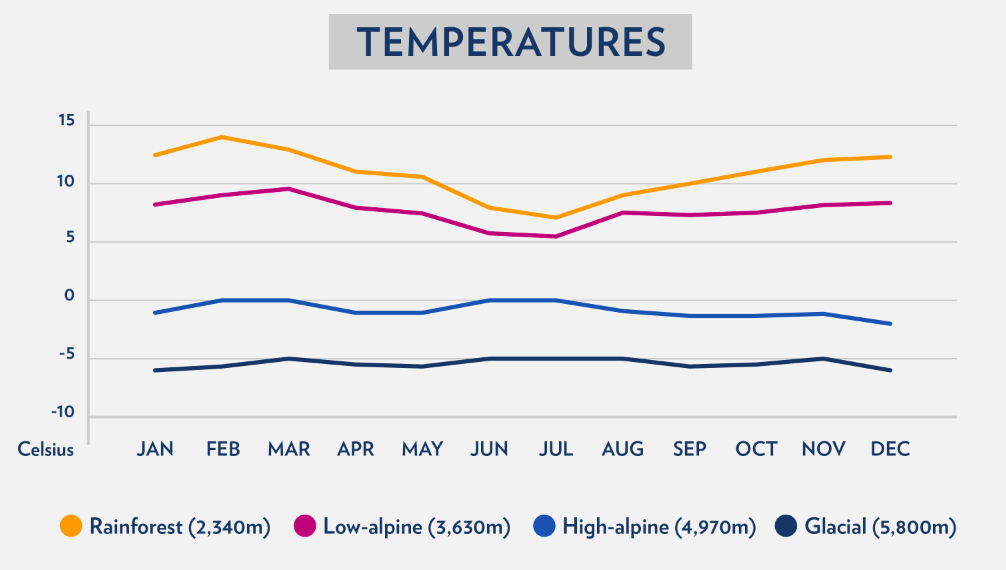
How much does it cost to climb Kilimanjaro?
It costs between $2000-$3500 to hike Kilimanjaro.
Trekking Kilimanjaro is unfortunately not a very cheap activity. Prior to 1991, you could literally rock up in Moshi with a backpack, some dry food and a spirit for adventure, and be on a trail up to Kilimanjaro’s summit unsupported.
Since the early 90s, though, trekkers have had to be accompanied by a registered guide and pay entrance park fees. The latter has got relatively expensive and can cost up to $1,000 depending on the length of a trek (see information on Kilimanjaro park fees).
Today, the standard setup for a climb involves a full support team of a guide, cook and porters, who are instrumental in getting most trekkers to the summit successfully and safely. The combination of high park fees and full support teams mean that an average Kilimanjaro hike (excl. travel expenses like flights and off-mountain expenses) costs between $2,000-$3,500. You can book directly with the local operators I recommend on Skyhook.
It is possible to find climbs for as little as $1,500 but these tend to be with operators who have questionable practices, particularly with regard to how much they pay their porters.

Plan your Kilimanjaro trek
Get connected with my recommended local Kilimanjaro operator
How can I avoid altitude sickness on Kilimanjaro?
Altitude sickness (aka Acute Mountain Sickness) is a systemic issue on Mount Kilimanjaro. This is partly to do with the fact that Kilimanjaro is a high altitude trek, but more critically because the speed of ascent on most Kilimanjaro routes is relatively rapid. Before you travel to Kilimanjaro it is vital that you understand the risks of high altitude trekking.
I've written a detailed online guide that explains how you can improve your chances of achieving proper acclimatisation on Kilimanjaro, as well as explains what symptoms to look out for in terms of altitude sickness. I've also provided information on the severe and dangerous conditions of High Altitude Pulmonary Edema and Cerebral Edema.
- Click here to read my guide: Acclimatisation and Altitude Sickness on Kilimanjaro.
- I also suggest you read our article on the preventative medication, Diamox.
How many people hike Kilimanjaro each year?
Approx. 35,000 people attempt to hike Kilimanjaro every year.
What is Kilimanjaro summit success rate?
Kilimanjaro’s summit success rate varies from 45% to over 85%, depending on the route chosen. The chances of reaching the summit of Kilimanjaro are highly dependent on the number of days taken to trek the mountain. The more days, the higher the probability of success as your body has more time to adapt and acclimatize.
Insight from the tour operators I work with shows that success rates are over 85% for all the trekkers who climb Mount Kilimanjaro or Mount Meru.
See detailed information on Kilimanjaro summit success rates.
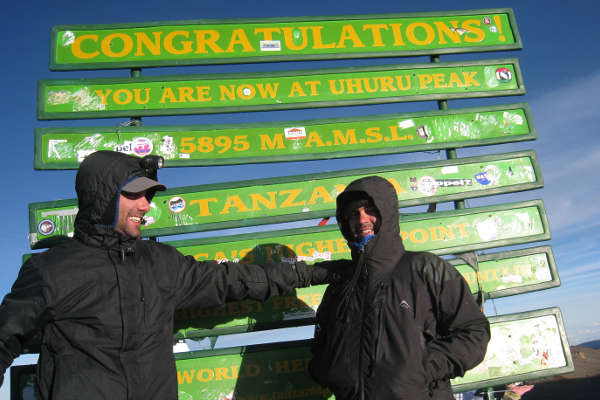
What insurance do I need for Kilimanjaro?
Climbing Kilimanjaro comes with obvious risks. It is important that you get adequate insurance for your Kilimanjaro climb. Most standard travel insurance policies will not cover high altitude treks.
In my article – Kilimanjaro Travel Insurance – I provide detailed advice on the type of insurance cover you need.
Alternatively, get a quote from my recommended insurance company, World Nomads. World Nomads provide specific coverage for hiking up to 6000m, which is perfect for Kilimanjaro.
What gear do I need to pack for Kilimanjaro?
The packing list for a Kilimanjaro trek includes a number of critical items. Some of these can be rented or bought in Moshi or Arusha before your trek, but there are a few very important pieces of gear that I recommend you bring with you to Kilimanjaro.
This detailed Kilimanjaro kit packing list provides a comprehensive overview of the gear you need as well as recommendations and links to specific gear outfitters.
Here are links to specific sections within the packing list:
- Clothing: Weather conditions on Kilimanjaro fluctuate significantly and rapidly from lower altitudes to higher altitudes. In this section, I provide detailed advice and recommendations on the type of clothing you require and the important mechanism of layering
- Headgear: From hats, beanies and balaclavas, to headlamps and sunglasses, I cover it all in this section
- Footwear: Your feet are what get you to the top of Kilimanjaro. Read this section to understand what type of hiking boots you need, as well as which trekking socks are required
- Gloves and Trekking Poles: Your hands will be the first to freeze on the trail up to Kilimanjaro’s summit. Make sure you get the right gloves and invest in trekking poles to protect your knees
- Bags and Daypacks: There are two types of bags you need for a Kilimanjaro trek. Read this section to understand which bags are ideal for your hike
- Sleeping Bags: In this section, I outline the key characteristics to look for in a sleeping bag for Kilimanjaro
- Other Accessories: Here, I provide an exhaustive list of all the other accessories you need to climb Kilimanjaro. From water bottles and zip-lock bags to spare batteries and earplugs, I cover it all in this section
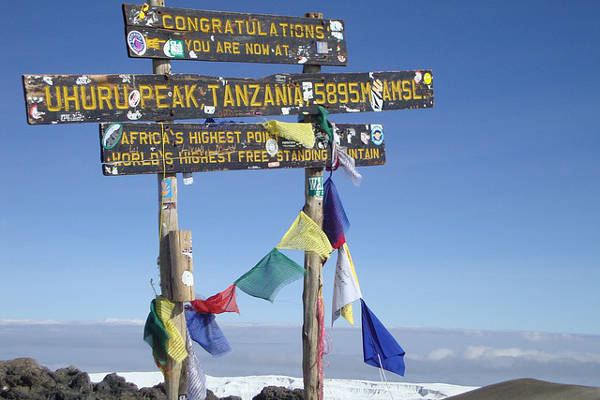
What’s the best training plan for Kilimanjaro?
You should do at least 6-8 weeks of training before embarking on your Kilimanjaro trek. The best type of training is in fact long-distance mountain trail walking. If you can’t get out into the mountains though, then aerobic gym workouts (running, cross-training, swimming etc.), that combine some strength work (especially leg workouts) are a good bet.
What is the minimum age to climb Kilimanjaro?
The minimum age to climb Kilimanjaro is 10 years or older, however, it is possible to get special permission from the Tanzanian government to take children younger than 10 years old on a Kilimanjaro expedition. Read more about the youngest people to climb Kilimanjaro.
Do you recommend going on safari before or after hiking Kilimanjaro?
I recommend arranging a safari after your Kilimanjaro hike. This removes any stress associated with thinking about the climb whilst on safari, and you can relax and enjoy the wildlife.

Plan your Kilimanjaro trek
Get connected with my recommended local Kilimanjaro operator
What are the best Kilimanjaro guidebooks?
There are a number of very interesting and useful books and guidebooks that have been written on Mount Kilimanjaro. I recommend having a look at my Kilimanjaro library where I review some of my favourite Kilimanjaro books.
The most comprehensive and authoritative guidebook, Kilimanjaro: The Trekking Guide to Africa’s Highest Mountain, was written by Trailblazer author and Kilimanjaro expert, Henry Stedman. If you are looking for a very detailed and informative guide, then I recommend you go for this one.
Alternatively, I've written a short guide called Mount Kilimanjaro: Trekkers Guide to the Summit, which provides all the essential information you need to know at a smaller cost.
In terms of fun and entertaining works of fiction from previous climbers, I suggest either Rick Ridgeway’s book, The Shadow of Kilimanjaro or Tim Ward’s Zombies on Kilimanjaro: A Father/Son Journey Above the Clouds.
How many people die annually climbing Kilimanjaro?
We estimate between 3-10 people die hiking Kilimanjaro each year. Deaths on the mountain occur due to various reasons including AMS (such as HACE and HAPE), falls, and hypothermia. Sometimes porters die due to the onset of malaria whilst on the trek.
Unfortunately, KINAPA doesn’t provide official statistics on deaths so you may see many conflicting figures on the internet.
Is climate change affecting Kilimanjaro glaciers?
Yes, climate change is affecting Kilimanjaro glaciers, unfortunately. There is scientific consensus that Mt Kilimanjaro’s glaciers have been rapidly receding for the past century, and that human-induced climate is largely to blame.
The whole mountain summit was covered by an ice cap at one stage, probably more than 100 meters deep. However, since 1912, Kilimanjaro has lost 82% of its ice cap and since 1962, it has lost 55% of its remaining glaciers. If the present rate of receding continues the majority of the glaciers on Kilimanjaro could vanish altogether.
Here’s a detailed article on Kilimanjaro’s climate zones.
Recent Articles
The Climb Kilimanjaro Guide has a very active blog. Here are links to recent articles.
Tags: Mount Kilimanjaro, Climb Kilimanjaro, Hike Kilimanjaro, Climbing Kilimanjaro, Trek Kilimanjaro, Kilimanjaro Hike, Africa, Tanzania, Mountain

